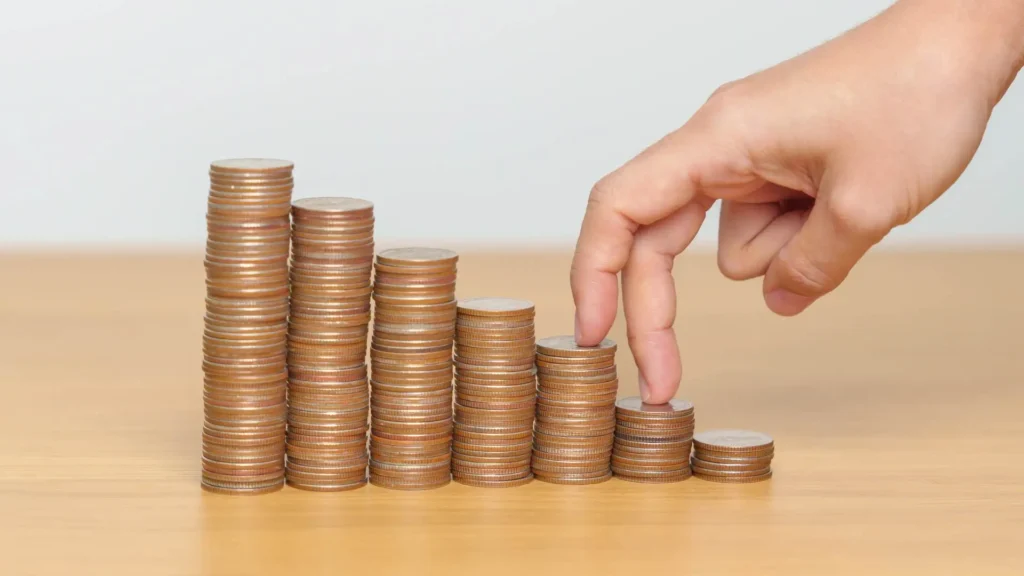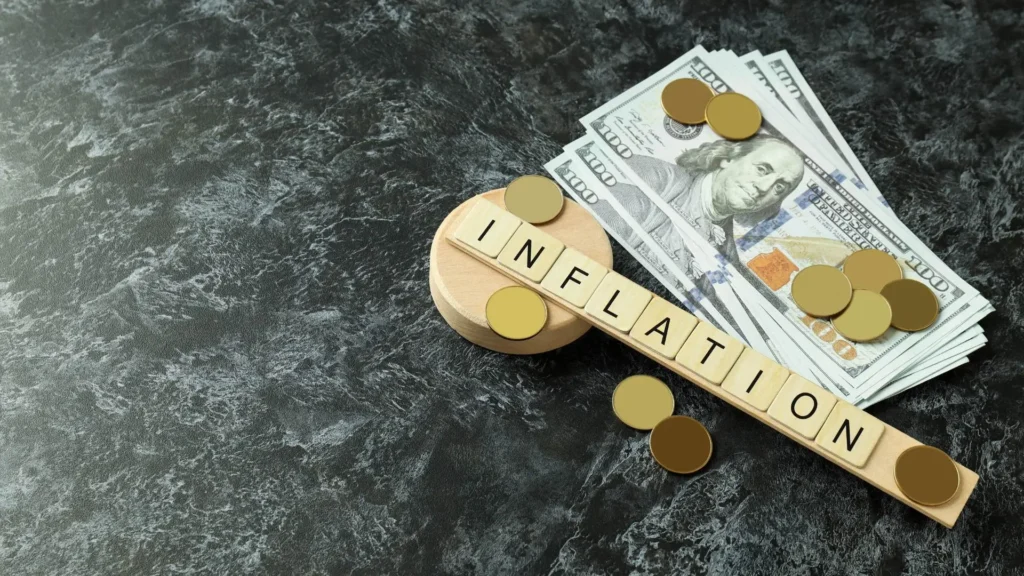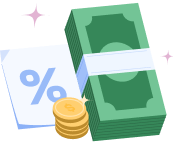Table of Contents
Are you struggling with finances and wondering how to prioritize debt repayment? It has become a critical concern as total household debt in the United States soars past $17 trillion, including everything from mortgages and student loans to auto payments and credit card balances. For millions of Americans, this isn’t just a statistic; it’s a source of daily stress and a significant barrier to building wealth.
You want to pay it off, but the task can feel overwhelming when you’re facing multiple monthly bills—a credit card with a high interest rate, a student loan with a massive balance, and a car payment that’s always due. Getting out of debt is not just about earning more money or working harder. It’s about working smarter. It’s about creating a strategic, intentional plan that gives every dollar a purpose.
This guide will provide a clear, step-by-step framework for creating a budget prioritizing debt repayment. We will help you move from being reactive—paying bills as they come—to being proactive and telling your money exactly where to go on your journey to financial freedom.
Part 1: The Foundation – Why You Need a Repayment Plan
If your current ‘plan’ is to pay the minimum amount due on all your debts each month, you’re not making a plan—you’re following the lender’s plan. Minimum payments are designed to keep you in debt for as long as possible, maximizing the interest you pay over time. A 2020 study by the American Bankers Association found that making only minimum payments on a $5,000 credit card balance at 18% interest could take over 16 years and cost more than $6,000 in interest alone.
A strategic repayment plan flips the script. It saves you thousands of dollars in interest, dramatically reduces your financial stress, and accelerates your journey to becoming debt-free, often by years.
Read related blog: Consolidating Debt to Improve Your Credit Score: Everything You Need to Know
Part 2: Step 1 – Assess Your Financial Situation (Know Your Enemy)
You cannot create a winning strategy without first understanding the battlefield. Before attacking your debt, you must know precisely what you’re up against. This means taking a clear-eyed inventory of every single debt you have.
Action Step: Create Your Debt Inventory
Open a spreadsheet or grab a notebook and list every debt you owe. For each one, you must find and record the following four pieces of information:
- Creditor Name: To whom you owe the money (e.g., Chase, U.S. Dept. of Education, Honda Financial Services).
- Total Balance Owed: The full, current amount you owe.
- Minimum Monthly Payment: The smallest amount you are required to pay each month.
Interest Rate (APR): This is the most critical piece of information. The Annual Percentage Rate is the price you pay to borrow money. Find it on your latest statement. Your finished inventory should look something like this:
| Creditor | Total Balance | Minimum Payment | Interest Rate (APR) |
| Capital One Card | $4,500 | $120 | 22.9% |
| Federal Student Loan | $28,000 | $250 | 5.8% |
| Auto Loan | $11,500 | $350 | 7.2% |
| Personal Loan | $2,000 | $100 | 14.5% |
This exercise alone can be incredibly empowering. You will have a clear picture of your debt situation for the first time.
Read related blog: Pay Off Debt With Beem’s Personal Loans to Boost Your Credit Score
Part 3: Step 2 – Create Your Budget to Free Up Cash (Find Your Ammunition)
Now that you know how much you owe, you must find the extra money in your budget to attack it aggressively. A budget isn’t about restricting your fun; it’s about giving you control over your money. Beem’s Budget planner can help you plan and save money like an expert with on-point financial insights and recommendations.
Action Step: Implement a Simple Budgeting Rule
The 50/30/20 rule is an excellent starting point for its simplicity and effectiveness. It divides your after-tax income into three categories:
- 50% for Needs: These are your essential, must-pay expenses. This includes housing (rent/mortgage), utilities, transportation to work, groceries, and insurance.
- 30% for Wants: This is your discretionary spending—the things that make life enjoyable but aren’t strictly necessary. This includes dining out, entertainment, streaming services, hobbies, and vacations. This is the first and best place to look for areas to cut back. Could you reduce your dining-out budget by $100 a month? You can throw an extra $1,200 a year at your debt.
- 20% for Savings & Debt Repayment: This is your power category. You must first cover all your minimum debt payments from this slice of your income. Any money left over in this category is the ‘ammunition’ you will use to accelerate your debt payoff plan.
Part 4: Step 3 – Choose Your Debt Repayment Strategy (Pick Your Weapon)
This is the core of your plan. While you must continue making minimum payments on all your debts to protect your credit score, these two primary strategies determine where all your extra money goes.
Strategy 1: The Debt Avalanche Method
The Debt Avalanche is the most efficient, mathematically sound way to pay off debt.
- How it Works: You focus all your extra money on the debt with the highest interest rate first, regardless of the balance. Once that high-interest debt is completely paid off, you ‘avalanche’ that full payment amount (the original minimum plus all the extra money) onto the debt with the next-highest interest rate, and so on.
- Pros: This method saves you the most money in interest over the long run. By first eliminating your most expensive debt, you reduce the total amount you give to lenders.
- Cons: It can take a long time to pay off that first debt, especially if it has a large balance. This lack of immediate positive feedback can be discouraging for some.
- Best For: People disciplined, logical, and motivated by the numbers. If saving the maximum amount of money excites you, the Avalanche is your method.
Read related blog: How to Lower Your Debt-to-Income Ratio and Boost Your Credit Score
Strategy 2: The Debt Snowball Method
Made famous by financial guru Dave Ramsey, the Debt Snowball focuses on motivation and momentum.
- How it Works: You first focus all your extra money on the debt with the smallest balance, regardless of the interest rate. You get a quick psychological win once that small debt is wiped out. You then ‘snowball’ that entire payment amount onto the debt with the next-smallest balance.
- Pros: It delivers quick, decisive wins. Paying off an account, even a small one, provides a huge motivational boost and helps you build momentum to tackle the larger debts.
- Cons: You will pay more in total interest than the Avalanche method because you might leave a high-interest credit card to grow while you pay off a small, low-interest loan.
- Best For: People who need to see progress quickly to stay motivated. If you’ve struggled with financial plans, the Snowball can help you build the confidence you need to see it through.
Part 5: Step 4 – Balancing Debt Repayment with Other Financial Goals
Aggressively paying off debt is a fantastic goal, but it shouldn’t happen in a vacuum. An innovative financial plan includes protecting yourself from falling into debt in the future. Here is the correct order of operations for your money.
- Make All Your Minimum Payments: This is non-negotiable. Missing payments will result in late fees and severe damage to your credit score, worsening your financial situation.
- Build a Starter Emergency Fund: Before throwing every spare dollar at your debt, you must save at least $1,000 in a separate savings account. This is your buffer against life. When a minor emergency happens (like a flat tire or an unexpected medical bill), you can pay for it with cash instead of reaching for a credit card and digging deeper into debt.
- Get Your Full Employer 401(k) Match: If your job offers a 401(k) retirement plan with an employer match, you must contribute enough to get the full match before aggressively attacking your debt. An employer match is a 100% return on your money. No debt interest rate is high enough to justify passing up free money.
- Aggressively Attack Your Debt: Once the first three priorities are covered, you can unleash all remaining funds from your budget to your debt using your chosen strategy (Avalanche or Snowball).
Read related blog: How Tackling Debt Can Improve Your Credit Score: Proven Methods
Part 6: Your Step-by-Step Action Plan
Let’s combine it into a simple, actionable plan you can start today.
- List All Your Debts: Create your debt inventory spreadsheet with the creditor, total balance, minimum payment, and interest rate for every debt you have.
- Create a Budget: Track your income and expenses to determine how much extra money you can spend on your debt each month.
- Choose Your Strategy: Decide whether you are more motivated by saving money (Avalanche) or quick wins (Snowball). Commit to one method.
- Automate Your System: Log in to your bank account and set up automatic payments for all your minimums. Then, set up a separate, automatic payment toward your monthly target debt. Automation is the key to consistency.
- Review and Adjust: Check your progress at least once a month. As you pay off debts, remember to redirect those old payments to your new target debt to accelerate your progress.
FAQs on How to Prioritize Debt Repayment in Your Budget
What debt should I pay off first if one is delinquent?
If you have a past-due or in-collections account, make it your absolute priority, even before starting the Avalanche or Snowball method. You must stop the immediate damage to your credit score and prevent the debt from escalating into legal action.
Should I stop saving completely to pay off debt?
No. A sound financial plan requires balance. Always build a starter emergency fund ($1,000) and contribute enough to get your full employer 401(k) match before aggressively attacking your consumer debt.
Should I focus on my student loans or my credit card debt first?
For nearly everyone, the answer is to focus on credit card debt first. Credit cards typically have much higher interest rates (often 20%+) than federal student loans (often 5-8%). Using the Debt Avalanche method, you would naturally attack the high-interest credit card debt first, saving you significant money.
Conclusion: The Path to Financial Control
Creating a debt repayment plan is more than just numbers on a spreadsheet; it’s about taking back control of your finances. It’s about making a conscious decision to give every one of your hard-earned dollars a specific job, directing your resources with purpose and intention.
The journey to becoming debt-free is a marathon, not a sprint. There will be moments of temptation and fatigue. But consistency is far more important than intensity. By assessing your situation, creating a realistic budget, and committing to a proven strategy, you can systematically dismantle your debt, piece by piece. With Beem’s financial tools, you can make this a reality. Download the app now.
















































